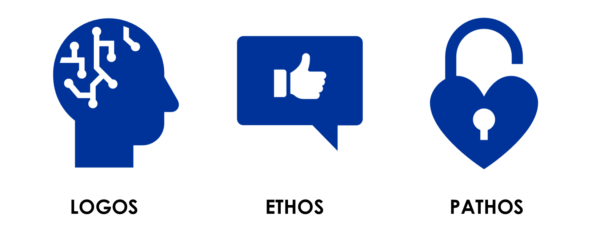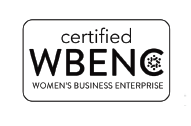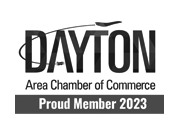You might be missing this in your virtual keynote presentation
 Don’t give in to temptation. All those digital tools available for your virtual keynote presentation should complement – not replace – time-tested methods to engage and persuade your audience.
Don’t give in to temptation. All those digital tools available for your virtual keynote presentation should complement – not replace – time-tested methods to engage and persuade your audience.
No doubt you’ve been attending virtual events these days. Perhaps you’ve even delivered a virtual keynote presentation as more business is conducted online.
Around the globe, leaders are busy adapting their in-person speeches and presentations for an online world.
Often, it’s a scramble.
And quite frankly?
Many leaders feel uneasy.
“I’m fairly comfortable presenting in person,” they have told me. “But I’m just not as comfortable delivering a virtual keynote presentation.”
These leaders wonder and worry:
- Will I be able to capture people’s attention?
- How will I keep my virtual audience engaged?
- Will people get distracted?
- How can I maintain my energy from beginning to end?
- How will my message be perceived online?
- Will my talk come off as boring?
- How will I know whether my virtual speech had the intended effect?
- Will my audience even remember what I said?
Most leaders are savvy enough to know what they’re up against when planning and drafting a virtual keynote presentation.
They understand they need to do something to replace what is missing when they present to people who are not physically present. Leaders want to make sure their audience comes along – and stays along – for the entire ride online.
 The secrets and solutions for “virtual audience engagement,” leaders are told, lie somewhere inside the digital video conferencing or virtual event platform itself.
The secrets and solutions for “virtual audience engagement,” leaders are told, lie somewhere inside the digital video conferencing or virtual event platform itself.
So leaders log in to these platforms and test the waters.
Automatically they are served up a virtual smorgasbord of real-time digital presentation and collaboration tools ripe for the choosing – the chance for:
- Chats
- Q&As
- Screen sharing
- Whiteboards
- Breakout rooms
- Live polling
- Quizzes – and more
But is that really the answer to the engagement question?
Is that really how you need to ensure you connect with and move your audiences watching and listening online?
What might really be missing from your virtual keynote presentation?
‘It still feels … weak’
Recently I consulted with and virtually coached a longtime speaker preparing for a virtual keynote presentation he would soon deliver to colleagues around the world. Everyone was now working from home.
 This was to be a motivational speech – a persuasive speech – with a tall order for a radical change in both thinking and behavior.
This was to be a motivational speech – a persuasive speech – with a tall order for a radical change in both thinking and behavior.
(In truth: The basic ask for this particular change would be rather bitter medicine for this audience – unless it was structured, crafted and delivered in precisely the right way.)
I reviewed the speaker’s initial notes, which roughly mapped out the flow of the talk.
Included were a laundry list of logical points to make the strongest possible argument for radical change. The argument was grounded in data, backed by research and evidence, and enriched by examples and next steps.
Tables and charts appearing on draft slides illustrated the hoped-for transformation. The speaker also imagined a case study delivered live by a trusted colleague, and virtual breakout rooms so the audience could share ideas and report back online.
And yet, the speaker admitted, “This virtual keynote presentation still feels weak.
“Something’s missing.”
And he was right.
A three-legged stool
For the answer to this 21st century problem, we need to rewind about 2,400 years, back to the time of Aristotle. The Greek philosopher famously taught that logos alone – the logical argument, or the words – will never be enough to motivate and persuade an audience to change their thinking or behavior.
Instead, Aristotle said, a speaker must deftly balance the logical argument with both ethos and pathos.
- Ethos is how the audience perceives the character of the speaker. Does the audience have good reason to know, like and trust the speaker, and believe what he or she is saying or suggesting in the speech? The speaker’s reputation, expertise and experience come into play here.
 Pathos is related to emotions. Has the speaker appealed to the audience’s emotions – and true feelings – about the situation at hand? Has the speaker referenced shared experiences? Captured the imagination? Pointed toward a more desirable future?
Pathos is related to emotions. Has the speaker appealed to the audience’s emotions – and true feelings – about the situation at hand? Has the speaker referenced shared experiences? Captured the imagination? Pointed toward a more desirable future?
Indeed, both ethos and pathos were missing in my client’s initial draft of his virtual keynote presentation.
So we put our heads together and came up with the critical fixes, which affected his opening and closing stories, transitions throughout the speech and key takeaways – as well as the overarching message of his virtual keynote presentation.
Here are two examples of what we fixed:
- To tap into ethos, we reminded the audience how the speaker himself had successfully led them through other daunting challenges in the past (which the team confronted and overcame by pulling together, doing the hard work and exceeding all expectations). Taking a moment to jog collective memories – and stir up feelings of pride that “we can do this, too!” – gave people a reason to believe and trust that the leader would play a similar role alongside them once again.
- To tap into pathos, we adjusted the tepid language of the initial overarching message and turned it into an emotional question with energy and possibility – a lofty goal that transformed members of the audience into heroes fully capable of entering into this new opportunity (one they had likely never considered before).
In the end, the speaker felt satisfied – even relieved, he told me – because now he understood what had really been missing from his virtual keynote presentation.
What’s next for leaders? (A lot more virtual than we ever imagined)
No doubt the virtual keynote presentation is here to stay.
Just ask Larry Emond, managing director, Global Leadership Advisory, at Gallup, which has been providing analytics and advice to help organizations lead through the COVID-19 disruption.
 During a recent webinar, Emond presented insights he’s gained from conversations with chief human resources officers of the world’s largest companies.
During a recent webinar, Emond presented insights he’s gained from conversations with chief human resources officers of the world’s largest companies.
Responding to a question from the audience about how leaders can maintain organizational culture in a virtual world, Emond’s answer alluded to why leaders need to get better – now – at delivering engaging messages online.
He said:
“You are going to have to identify and develop leaders that can do that well – that can engage and motivate and inspire people virtually without necessarily being with them in person very often.
“Again, not just because of COVID-19.
“But because coming out of this, we’re realizing we’re going to allow a lot more of that than we ever imagined.”
The lessons here are time-tested and clear:
Don’t be tempted to use digital tools as a replacement for the right balance of logos, ethos and pathos.
That’s the triad to apply if you want to engage, motivate, inspire and persuade – not only when you’re speaking in person but also when you’re delivering a virtual keynote presentation.
Incorporating logos, ethos and pathos will free you up to use digital tools exactly the way they were intended: as complements to a well-structured – and purposely crafted – virtual keynote presentation.

















